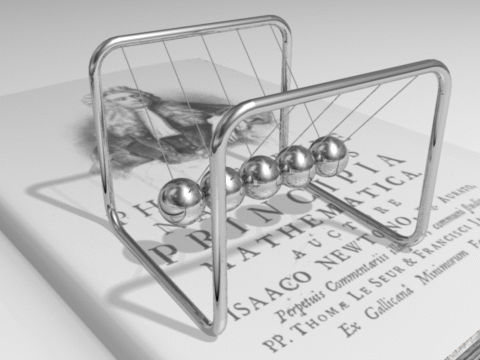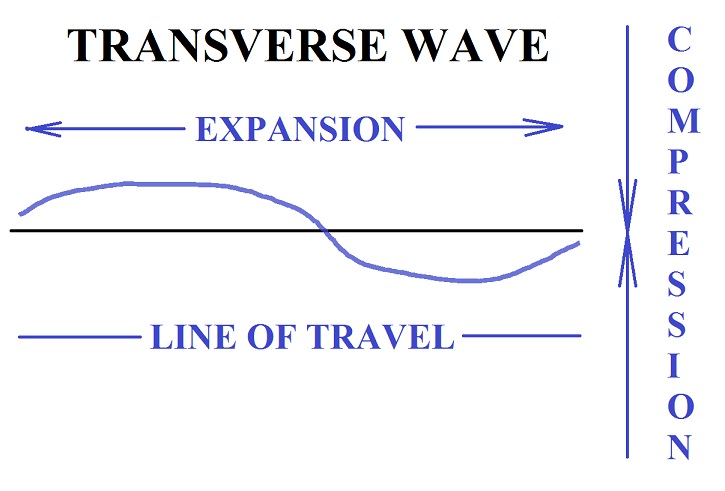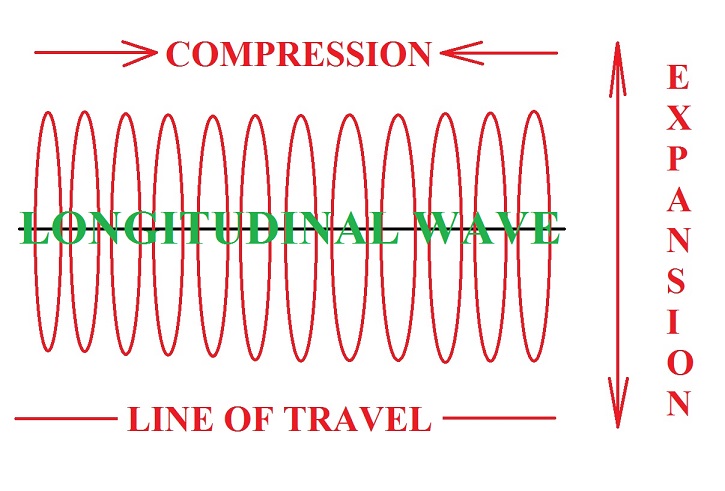
AVAILBLE NOW: Bedini
SG -
The Complete Advanced Handbook

AVAILBLE NOW: Bedini
SG -
The Complete Advanced Handbook
 |
|
|||||||
| Renewable Energy Discussion on various alternative energy, renewable energy, & free energy technologies. Also any discussion about the environment, global warming, and other related topics are welcome here. |
 |
|
|
LinkBack

|
Thread Tools

|
|
|||
|
Longitudinal vs Transverse (with a short aside on DC vs AC).
I think the only difference between
longitudinal and transverse wave energy is its geometry. But I think one
can readily translate into the other. And I think that Newton's Cradle
is a classic demonstration of this conversion.
 We coil a spiral winding to induce a stronger spiral transverse wave than whatever is already there flowing down that wire. And we build a Perpetual Motion Holder as a circular transformer core to induce a stronger longitudinal wave form traveling in what already is circular for the electromagnetic energy traveling around and around inside of that iron core during each half phase of an AC cycle. No conservation of energy law is broken since that circular longitudinal electromagnetic energy will continue to travel in the direction to which it had been assigned until acted upon by an opposing force (which is what the second half of an AC cycle amounts to). I think that the electrostatic energy stored in the dielectric of a capacitor is also circular, just like the circular perpetual motion within a transformer core. I think that the spiral transverse electromagnetic energy traveling down the wire becomes circular when it hits up against the wall of the dielectric. Then the spiral form collapses, or if you prefer: squashes under pressure, into circles, when it enters into the dielectric. A conversion has taken place from transverse into longitudinal. The inverse conversion takes place when the capacitor discharges. And when discharge occurs, the spiral coming out should be inverted from whatever entered into the dielectric according to the dynamics exhibited in John Shive's transverse wave machine when one end is fixed and the other end of his machine is free to wiggle up and down. AT&T Archives- Similiarities of Wave Behavior (Bonus Edition) - AT&T Tech Channel In Newton's Cradle, the mechanical energy of any ball, or set of balls, is transverse as it spirals in its direction of motion. The motion of a ball doesn't look like a spiral because it is being guided by its two support strings. In fact, it looks like reciprocating motion. Each half cycle of a reciprocating motion is always a corkscrew action: a spiral digging its way along a length of direction as if the corkscrew action that it takes is its path of least resistance. This corkscrew method of travel for a transverse wave is not so apparent in a non-viscous medium such as air when those balls of Newton's Cradle fail to swivel as they swing. Nor is it very apparent due to their stricture by way of their supporting strings. But if we immerse Newton's Cradle into a bath of oil and take away the smoothness to its balls making them more like a football in appearance, then it becomes very quickly apparent how necessary are the dorsal fins on a fish or dolphin are to prevent those creatures from rotating like a football as they swim along.  A
corkscrew method of travel for a transverse wave can invert itself -
turn itself inside out. This was demonstrated by John Shive in his
transverse wave machine whenever he held one end of his machine rigid in
spacial position while starting a wave at the opposite end which was
free to move with a flipping action of his hand. A wave would travel
down the length of his machine and invert its phase relation by 180
degrees when it reflected off the opposite fixed end. Without that firm
grip at the reflective end of the wave's line of travel, the wave would
return without any inversion. This demonstrates two types of
reciprocating motion: one which inverts every half cycle like in a
resonant tank circuit, and one which does not invert itself, such as in
an open circuit. A
corkscrew method of travel for a transverse wave can invert itself -
turn itself inside out. This was demonstrated by John Shive in his
transverse wave machine whenever he held one end of his machine rigid in
spacial position while starting a wave at the opposite end which was
free to move with a flipping action of his hand. A wave would travel
down the length of his machine and invert its phase relation by 180
degrees when it reflected off the opposite fixed end. Without that firm
grip at the reflective end of the wave's line of travel, the wave would
return without any inversion. This demonstrates two types of
reciprocating motion: one which inverts every half cycle like in a
resonant tank circuit, and one which does not invert itself, such as in
an open circuit.I must add at this point the seeming contradiction exhibited by what I'm saying and what Mr. Shive says at 5min 34sec up to 6min 6sec. The contradiction lies in his example of an AC circuit. My analysis is also an AC circuit, but taken individually one half cycle at a time which is a DC phenomenon. The conclusions generated by these two approaches couldn't be more opposite - and thus, confusing. Analyzing the situation his way requires presumption of what is normal without stating exactly under what circumstances his sense for normalcy applies. But if you're careful, you'll see his precision in the form of an AC power symbol written on his black board. So, it's there in plain sight, but without any comparative discussion of a DC system (which is what an AC system is anyway: two DC half-systems every half cycle of an AC full cycle). In this analysis, I want to see what is happening within an AC system moment to moment to get a proper view of the difference between transverse and longitudinal - especially longitudinal which Mr. Shive gives short shrift to in his discussion of wave behavior (acoustical reflection at the end of a hollow tube).Continuing with the discussion of the corkscrew travel of a transverse wave...  Or
a corkscrewing transverse wave can get squashed into a circular
longitudinal wave form when pressured to do so on all sides of itself. Or
a corkscrewing transverse wave can get squashed into a circular
longitudinal wave form when pressured to do so on all sides of itself.Once it hits up against the standing balls in the center who have no where to go based on being locked in position due to adjacent stationary balls, the spiraling transverse energy shape of the falling ball/s translates its energy shape into that of a circle. It's no different than the dielectric acting as a  wall
for electromagnetic energy: a spiral of energy gets squashed under
pressure from more energy following behind it. As it undergoes
squashing, one of its spiral ends comes up and joins with the other. If
the squash process could discharge itself, then it would turn inside out
and invert itself on its way back out of it capacitated straight
jacket. So, if it had been a clockwise spiral, then it would convert
into a counter-clockwise spiral. Since it's natural tendency is to be a
spiral (whenever it is not under pressure in a tightly packed bundle of
energy; which is the definition of electrostatic pressure, or voltage,
as opposed to freely flowing current, or electromagnetism), as soon as
it's relieved of its pressure, it will want to immediately unwind out of
its circular perpetual motion format and back into its spiral form. A
spiral is perpetual too, just not isolated at any one location. Thus, a
spiral loses or gains energy because of its inability to sit
macroscopically still in one circular place hovering around a center of
spin. Since space is not a flat plane, I can only guess that even a
circular path of a longitudinal wave is not an absolutely true circle,
but a spiraling circle which shifts its circular plane of rotation
around eventually traversing the circumference of an entire sphere. wall
for electromagnetic energy: a spiral of energy gets squashed under
pressure from more energy following behind it. As it undergoes
squashing, one of its spiral ends comes up and joins with the other. If
the squash process could discharge itself, then it would turn inside out
and invert itself on its way back out of it capacitated straight
jacket. So, if it had been a clockwise spiral, then it would convert
into a counter-clockwise spiral. Since it's natural tendency is to be a
spiral (whenever it is not under pressure in a tightly packed bundle of
energy; which is the definition of electrostatic pressure, or voltage,
as opposed to freely flowing current, or electromagnetism), as soon as
it's relieved of its pressure, it will want to immediately unwind out of
its circular perpetual motion format and back into its spiral form. A
spiral is perpetual too, just not isolated at any one location. Thus, a
spiral loses or gains energy because of its inability to sit
macroscopically still in one circular place hovering around a center of
spin. Since space is not a flat plane, I can only guess that even a
circular path of a longitudinal wave is not an absolutely true circle,
but a spiraling circle which shifts its circular plane of rotation
around eventually traversing the circumference of an entire sphere.Maybe a more accurate, but not necessarily less confusing, method of describing a longitudinal wave form is not to focus on our use of the term: "longitudinal" as if our use of the word were exclusive to longitudinal waves alone, but to focus instead on its dual aspect and then compare this to the dual aspects of a transverse wave described in a similar manner. A longitudinal wave is a longitudinal zone of compressed circles whose diameters are perpendicular to their line of compression, and parallel to their line of expansion. A transverse wave is a transverse zone of compressed circles whose diameters are perpendicular to their line of expansion, and parallel to their line of compression. The direction of compression for a longitudinal circle is longitudinal, or parallel to its line of travel. The direction of expansion for a longitudinal circle is actually transverse, or perpendicular to its line of travel. The direction of compression for a transverse circle is transverse, or perpendicular to its line of travel. The direction of expansion for a transverse circle is actually longitudinal, or parallel to its line of travel. Confused, yet?  I don't want you to be, so here are some pictures that might help... I don't want you to be, so here are some pictures that might help...  To say that a wave actually undergoes compression or expansion is a bit ludicrous since a wave is a composite action of many parts. Take a stadium filled with people. They all decide to stand up and raise their hands and sit down and lower their hands in such a way as to give the appearance that a wave has traversed the entire stadium from one end to the other perpendicular to their up and down movement. The wave motion of the entire group of people is a coordinated event and a bit illusory on the macroscopic level of our perception of it. But that's due to our tendency for pattern recognition. Hence, waves are more of the mind than they are of reality and an outgrowth of our interpretation of reality into neatly grouped patterns of events whose analysis is far more complex. Likewise, whenever a single spiraling transverse wave seemingly compresses into numerous longitudinal circles, it is the coordinated appearance and disappearance of each part of the entire transverse wave which gives the appearance that a host of numerous longitudinal circular waves have sprung up out of seemingly nowhere. And whenever a longitudinal wave of numerous circles of Perpetual Motion Holders of energy seemingly stretch and unite into a singularly long transverse wave, all of those individual longitudinal waves didn't just disappear. The wave regrouped its individual members, some choosing to not participate, some choosing to get involved, to give the appearance that a transformation of a wave has taken place. It is the re-organization of energy of individual members of a wave along with the individual members of non-participating energy of the wave's immediate surroundings which gives the appearance that any particular wave can morph into any other wave. Last edited by Vinyasi : 01-03-2015 at 12:08 PM. Reason: forgot a few things... |
| Sponsored Links |